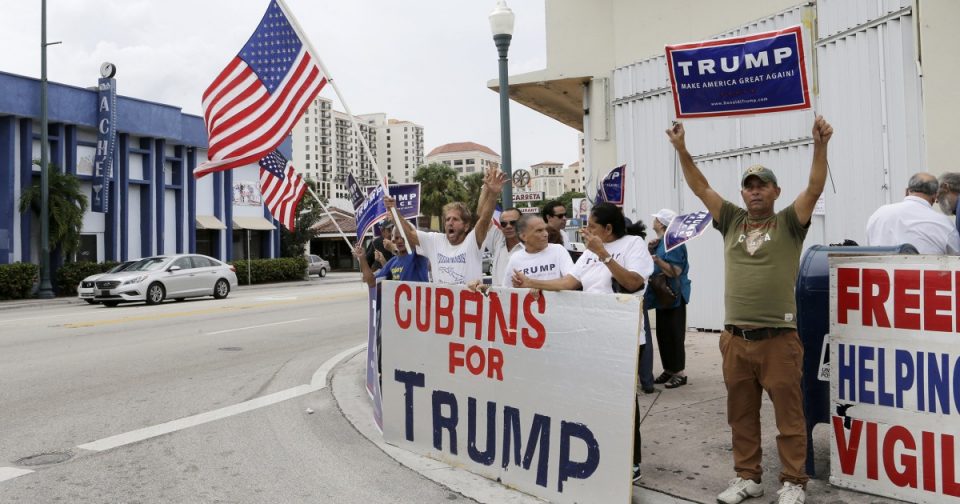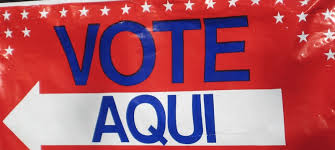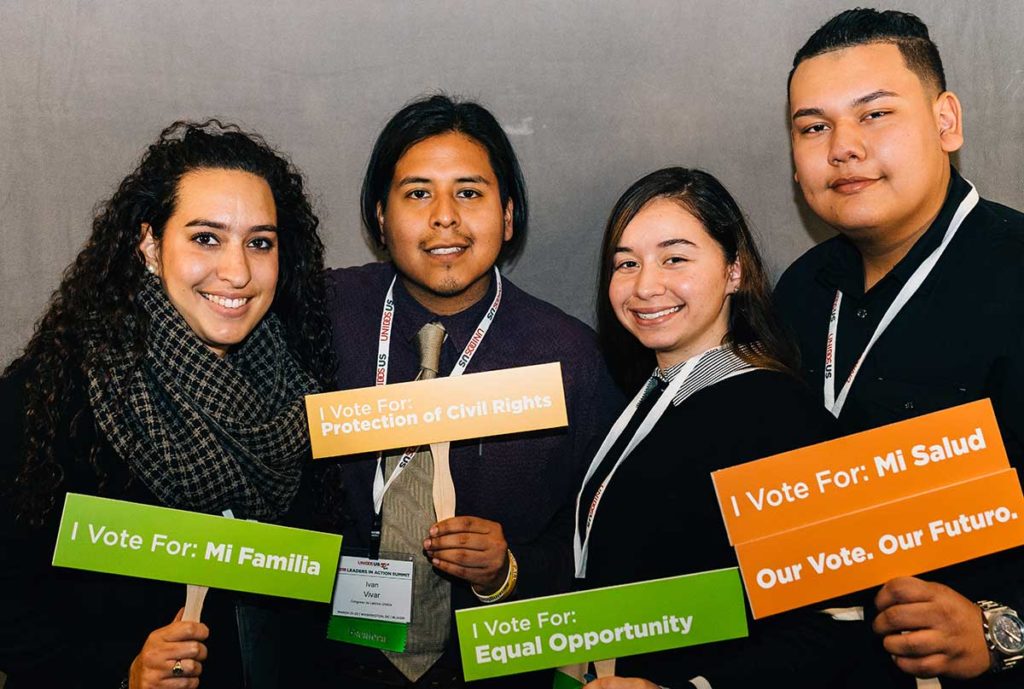Si Se Puede!
by C.C. Campbell-Rock
“If minorities came together as a voting bloc, we could flip the Louisiana Legislature,” civil rights activist Carl Galmon once said after analyzing the state’s population stats. The same is true for national political offices. If people of color voting strategically in a bloc, the U.S. Senate could flip. Voters of color could vote into the House and Senate people who could level the playing field. They could pass legislation that benefits all Americans. Latin voters have power in this election.
That could happen in a perfect world, but it is an unrealistic pipe dream, given that no group is monolithic when it come to politics. And this is especially true among Hispanics, Latinos, and Latinix voters. (A debate is raging over the use of the word Latinx a gender-neutral term to describe people of Latin origin instead of using Latino or Latina).
The cultures emanating from Latin America are as culturally and politically diverse as the colors of a rainbow.
Yet, the fact that Latinos comprise the fasting growing ethnic group in the U.S speaks volumes about their voting power and their potential to assume leadership positions in various sectors of American society.
Between 2010 and 2019, the Latino share of the total U.S. population increased from 16% to 18% for a total of 60 million people, making them second in population after non-Hispanic whites.
Defining Latinos
Latinos can trace their roots back to 20 Latin America countries: Mexico in North America; Guatemala, Honduras, El Salvador, Nicaragua, Costa Rica and Panama in Central America; Colombia, Venezuela, Ecuador, Peru, Bolivia, Chile, French Guiana, Paraguay, Brazil, Argentina and Uruguay in South America; Cuba, the Dominican Republic, Haiti, and Puerto Rico in the Caribbean— in summary, Hispanic America, Brazil, and Haiti.
“More than 50% of Latinos live in California, Florida and Texas. When adding New York, Arizona, Illinois, New Jersey, and Colorado those states collectively account for over 75% of all Hispanics in the United States,” according to the Hispanic Association of Colleges and Universities 2017.
“Latinos are one of the largest growing demographics in the country, and their support is essential to ensuring a win that cannot be challenged or litigated – especially in key battleground states like Arizona, Florida, Nevada, North Carolina, Pennsylvania, and Texas,” Maria Teresa Kumar, president of Voto Latina, wrote in a CNBC report entitled VP Joe Biden’s “Latino Problem.”
Turnout by Latinos may also be a problem. According to a survey by the Voter Participation Center in partnership with Voto Latino and Latino Decisions, which found that “less than 60 percent of eligible Latino voters say they definitely plan to cast a ballot in 2020. The survey results “demonstrated a low enthusiasm about the candidacy of Vice President Joe Biden.” This could diminish the Latin voters power.
RELATED: 11 Ways to Stop Trump’s Attack on Latinos
Trump vs Biden
“Even though Donald Trump has no viable path to gain majority Latino support as he makes anti-immigration a foundation of his re-election, Biden’s approval among young Latinos is waning,” Kumar added.
“On August 4, the Biden campaign announced “Todos con Biden,” its agenda with the Latino community, focused on affordable healthcare, access to quality education, immigration reform and what they’re calling a Small Business Opportunity Initiative. While this specificity is welcome, the Vice President and his team can do much more,” Kumar commented.
There is a flurry of news articles about the race between Biden and Trump being statistically tied in Florida. In south Florida Cuban-Americans have traditionally voted Republican. If Biden loses Florida’s 29 electoral votes, he could lose the election.
Cuban-Americans comprise 26 percent of Florida’s population or 1.5 million residents. “It’s common knowledge that Cuban-Americans were among President Trump’s most reliable supporters and helped him win Florida in 2016,” NPR reported in 2019. These voters choose Trump after Cuban-American Marco Rubio dropped out of the race.

Polls
In 2020, several polls over the summer showed Biden with a lead over Trump in Florida. That was before the Trump Campaign released fear factor ads labeling Democrats as radical socialists and communists; words that strike fear in the hearts of Cuban-Americans who fled the communist regime of Fidel Castro.
A recent poll by Bendixen & Amándi International and the Miami Herald found the former VP splitting Hispanic voters with Trump. Trump at 47% and Biden at 46%. “Those numbers are based on smaller polling subsets with larger margins of error . They are driven by Trump’s increased support among conservative leaning Cuban-Americans. Cubans supported Trump over Biden in the poll by a crushing 38 points,” The Miami Herald reported.
However, the Bendixen & Amándi Poll held a few bright spots for the former vice president. Biden led Trump, 51% to 33% among Miami-Dade County’s independent voters and 48% to 44% among white voters. Also, Biden was winning 16% of Republicans. Here Biden needs the Latin voters power.
Amid criticism that Biden is not doing enough to court the Latino vote, Latino Decisions, a Latino political opinion research organization, and the National Association of Latino Elected Officials Education Fund recently launched a nine-week tracking poll of the Latino electorate. They want to get real time analyses of the group’s political preferences.

Latinos are not excited over Biden
“Reports of low levels of enthusiasm among Latinos are sounding alarms that the Democrats have a Latino problem,” Adrian D. Pantoja wrote. Pantoja is an associate dean of faculty and professor of politics at Pitzer College, and Senior Analyst with Latino Decisions. He directly contradicts Kumar’s assertions of low enthusiasm for Biden.
“Biden has a clear advantage over Trump when it comes to three key indicators for Latino voter turnout: the economy, critical issues, and mobilization. The final key to the Latino vote, access to the polls, should now be at the top of Biden’s campaign strategy,” Pantoja advised.
Clearly, Latinos and Cuban-Americans will decide the winner of Florida’s 29 electoral votes. In Florida Latin voters must use their power.
Billionaire Michael Bloomberg has pledged to spend $100 million in Florida to help the Biden campaign. Created by former Bernie Sanders advisor, Chuck Rocha, Nuestro PAC is focused on Latino voter outreach. They are investing millions into bilingual mail outreach to newly registered Latino voters. According to USA Today, they are focused in Florida, North Carolina. Kamala Harris, Biden’s VP pick visited the state last week and Biden will travel to Florida next week.
One key Question
There is one question. Should the Biden Campaign continue to reach out to Cuban-Americans and others who have shown they will vote for Trump no matter what?
A fellow Cuban-American shared some advice recently for her ethnic peers. “While it’s understandable that Cuban immigrants once felt an affinity for the GOP as the party that faced down communism and championed economic advancement, my fellow Cuban Americans must come to grips with the reality that the actions of the current Republican administration bear deep similarities to the Cuban government our families fled from,” wrote A.J. Fuentes Twombly, a former CIA officer, in an opinion piece on NBC’s website.


THE BEST MAN FOR PEOPLE OF ALL COLORS !!!
MAKE SOME COFFEE AND POPCORN, GATHER ALL THE FAMILY, THIS WILL MAKE PEOPLE WISE SMART AND PRUDENT, ( YOU WILL BE BLESSED ) !
https://www.youtube.com/watch?v=I1Aj9YnKXIs
SEPTEMBER 21,2020
WHEN YA FINISHED,,, SHARE IT WITH A FEW 1000 PEOPLE .